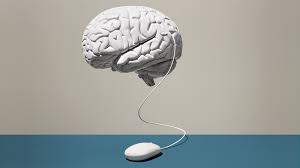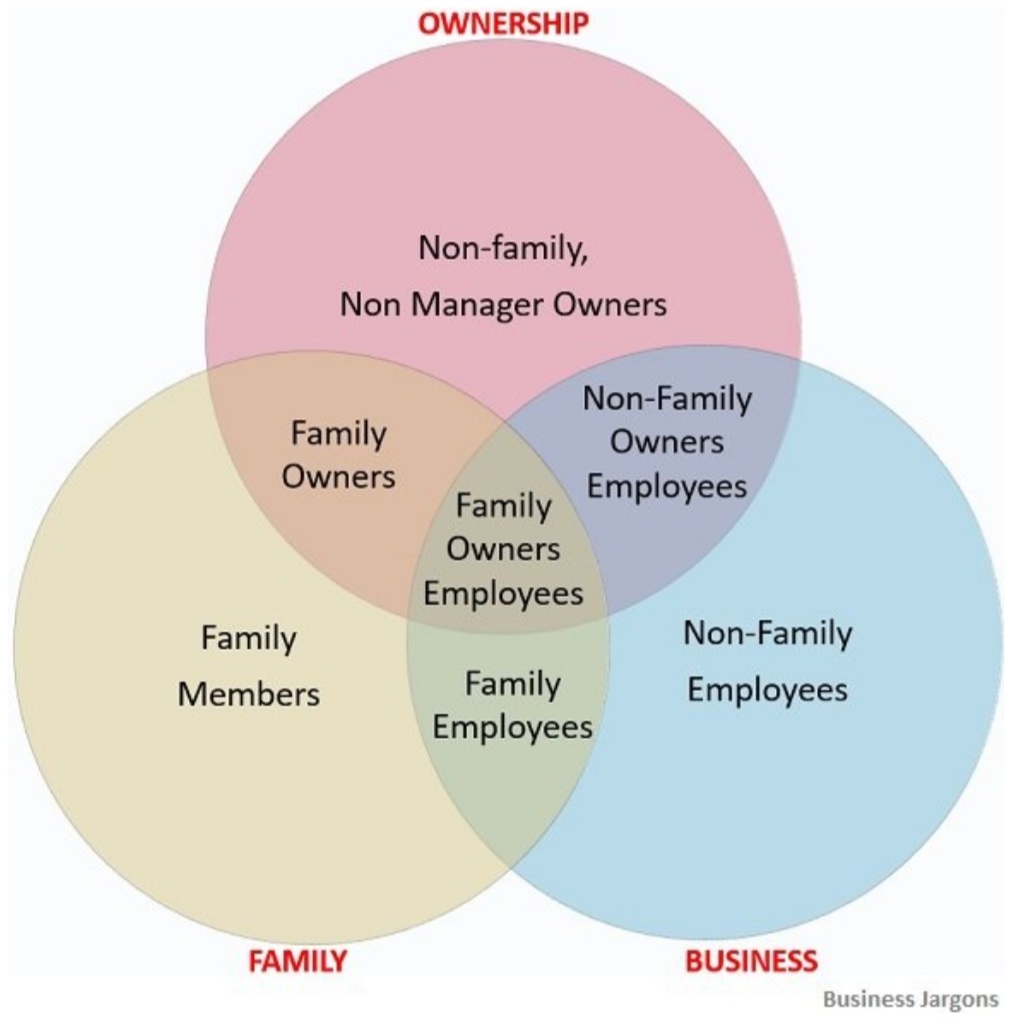
HERE’S A LITTLE secret
Some very successful people are wracked by anxiety. They worry about worst-case scenarios and every little thing that could go wrong. They stew over mistakes and unfavorably compare themselves with others. They focus on negative feedback while dismissing praise.
In many ways their anxiety is a benefit: After all, it fuels their drive, hard work, and achievement. They’re prized employees precisely because they go the extra mile and are satisfied with nothing less than the best. But if left unchecked, what may seem beneficial can make someone miserable, diminishing performance and career progress.
Consider Mark Goldstein, a lawyer. A few years ago he couldn’t stop imagining catastrophes, such as being sued for malpractice. He also constantly measured himself against his peers. “Our firm has about 1,800 attorneys,” he recalls, “and I thought the other 1,799 were all better able to deal with the stress of our jobs and lives.” To compensate, he obsessively reviewed his emails for mistakes and worked through vacations.
Nihar Chhaya tells a similar story. Despite being named one of the top 100 executive coaches in the world by the leadership coach Marshall Goldsmith, Chhaya used to routinely imagine his business faltering and question whether he’d be better off at a bigger company rather than on his own. “In my mind everyone else had it perfect,” he says. “I was the one who wasn’t going to excel.”
I’ll confess that I suffer from the same affliction. Recently asked to join an invitation-only business-book authors’ group, I felt instant panic. Who was I to be included among these best-selling writers, popular TED speakers, and even a three-star general? My imposter syndrome was acute.
Many of us do this: succumb to what psychologists call thought traps, or what others call cognitive distortion or thinking errors—patterns of untrue and negatively biased thought so ingrained that they arise automatically to ensnare us. Then we can’t see clearly, communicate effectively, or make good, reality-based decisions. And the consequences can have an adverse effect on us and the teams we lead.
Unfortunately, thought traps are exceedingly common among anxious achievers. To escape them, some people turn to overwork; others cope through drugs or alcohol, avoidance, or passive- aggressive behavior. But better solutions exist. The first step is to understand the various traps and identify which ones you’re most prone to. Then you can take intentional, straightforward, research backed steps to set yourself free.
THOUGHT TRAPS AND ESCAPE HATCHES
Eleven thought traps most commonly affect us at work—and you can escape each in specific ways. Most of these examples come from David Burns’s classic Feeling Good: The New Mood Therapy and The Feeling Good Handbook, though I’ve included a few others that seem to particularly affect anxious achievers.
All-or-nothing thinking
Burns describes this as a tendency to view things as black or white. If a situation falls short of perfection in your eyes, for example, you might see it as a total failure. A common example is a job interview. Allor-nothing thinkers will leave the interview focusing on a single blunder they committed or the one thing they wish they’d said and conclude that the entire event was a bust. It’s healthier to consider the interview as a whole: Sure, you wish you’d done a few things differently, but by and large it went OK. One of the best ways to respond to all-or-nothing thinking is to replace the “or” with “and.” The interview had positive and negative moments. It was a mixture of good and bad.
When you’re convinced that something is a complete disaster and nothing else, reach out to a trusted adviser. I usually turn to my husband or my former business partner. Both know me well and have a knack for helping me see in shades of gray rather than in my natural perfection-or-failure mindset.
Labelling
According to Burns, labelling is an extreme form of all-or-nothing thinking: “Instead of saying, ‘I made a mistake,’ you attach a negative label to yourself: ‘I’m a loser.’” We all have our own go-to labels when it comes to criticizing ourselves: “failure,” “incompetent,” “unqualified,” “undeserving.”
When you ascribe the source of a problem to someone’s character rather than to that person’s thinking or behavior, it suggests that the situation cannot be improved. If you think you’re inherently bad (I am a failure) rather than a normal person who makes mistakes or bad decisions (I occasionally fail), you’ve essentially given up. The same occurs when you label others. “You see them as totally bad,” Burns writes. “This makes you feel hostile and…leaves little room for constructive communication.”
One of the best ways to combat this thought trap (and others) is to use balanced thinking to examine the case for and against your knee-jerk assumption. Suppose you make a poor decision, and your automatic thought is I’m such an idiot! First, what’s the evidence that you’re an idiot? In this instance it’s that you made the wrong call. Describe the mistake. Now consider: Is a single bad choice really proof that you’re an idiot? Of course not. Documenting the opposing view also helps. Is there any evidence to indicate that you’re not an idiot? I think you’ll find plenty of things that attest to your competence and skill. If this balanced thinking points to areas in which you could improve—and they’re the ones making you anxious— it’s simply a sign to pay attention and put in more effort.
Jumping to conclusions. This familiar thought trap takes two forms. One is mind reading, which occurs when you arbitrarily conclude that someone is reacting negatively to you. (He doesn’t think I deserve my promotion. I’m sure she hates me.) The other is fortune-telling, which involves predicting that things will turn out badly even in the absence of proof. That can lead to inaction. (Why bother trying?)
I once thought a colleague was angry with me because she didn’t smile when we passed in the hallway. It turned out that she was worried and unhappy because her kids were sick. I’ve also walked into presentations assuming that I was going to flub them—which made me more likely to do so. Indeed, both modes of jumping to conclusions can diminish self-esteem, productivity, relationships, and decision-making.
You can counteract this thought trap with truth. Ask yourself: “Do I have access to another person’s inner thoughts? Can I really know what’s going to happen in the future?” You can also remind yourself of times in the past when you jumped to conclusions and were proved wrong.
Catastrophizing
This thought trap involves reaching the worst possible conclusion on the basis of little or no evidence: That tiny blemish must be melanoma. An argument with your significant other signals the end of the relationship. A less-than-perfect performance review means you’ll be fired. A catastrophist always expects the worst-case scenario, no matter the issue.
Again, this sort of thinking undermines performance. Suppose a cash-flow analysis of your business is less positive than you expected. All of a sudden you’re worried that the company will tank and you’ll lose your job. Although your rational brain knows that’s highly unlikely, when you’re stuck in this thought trap, even the most outlandish scenario seems plausible. At this point, consider advice from the award-winning author Ashley C. Ford: Anxiety is an unreliable narrator that “lies to you and tells you that everything is going to go wrong all the time. She recommends reminding yourself that “feelings are not facts.”
If you’re finding it hard to reason your way out of irrationality, try taking a small but meaningful action to stop the mental spiral. Consult an impartial observer who can talk you down. Or try to move the needle just a tiny bit forward—away from catastrophe. Even a small amount of progress can nudge your brain to refocus and get back to productive work. Keep your attention on what you can do in the near term rather than on what might happen next year or even three months from now.
Filtering
Burns describes mental filtering this way: “You pick out a single negative detail and dwell on it exclusively, so that your vision of all reality becomes darkened, like the drop of ink that discolors a beaker of water.” As an example, he cites a presenter who gets lots of positive feedback about her talk but ignores it and instead obsesses over one colleague’s critical comment.
Of course, the reverse can happen too—people may focus on what’s gone right and turn a blind eye to what hasn’t—but anxious achievers are more likely to dwell on the negative and fail to recognize and capitalize on all the things we do well. That leads to feeling discouraged or even hopeless.
A practical way to break out of this trap is to keep a record of your accomplishments and the praise you receive. Make a note every time you hit or exceed a target or log a win for your team or company, and retain any emails, tweets, or messages that contain positive feedback. That will provide objective proof that you’re doing good work, and you can review your file whenever you’re feeling overwhelmed or doubtful. (Bonus benefit: An achievement log makes self-assessments and performance reviews a snap.)
Discounting the positive
This thought trap is very similar to filtering, but I call it out because it shows up so frequently in anxious achievers. I’ve heard many leaders dismiss their successes by insisting that they were a fluke resulting from luck or good timing or that anyone could have accomplished what they did.
That may appear to be humility and thus not as harmful as some of the other traps, but it can cause big problems if it prevents you from repeating a triumph or trying something new. For example, a former colleague of mine fears public speaking; even though she has delivered well-received presentations, she believes that each one is a fluke, so she passes up desirable opportunities that require a more public role.
“Should” statements. I should be further along in my career by now. It shouldn’t be so hard to get ahead at this company. I should know better. Examples of this very common thought trap, which occurs when reality hasn’t met your high hopes or expectations, are endless. Statements that include the word “should” or its close relatives “must,” “ought to,” and “have to” can damage your mood and motivation, because, as Burns writes, they leave you feeling frustrated and rebellious rather than equipped to make changes and move toward your goals.
When you find yourself making a “should” statement, try reframing it in a gentler, less demanding way. For example, instead of I should be further along in my career by now, try I’d like to be further along in my career. Then consider whether there are actions you could take to rectify the problem. If there are, pursue them. If there aren’t, you might realize that your “should” statement is unrealistic. For example, I should always be able to anticipate my boss’s needs is an impossible standard.
Social Comparison
Comparing yourself with others is particularly pernicious, especially when it results in fatalistic self-assessments: He’ll always have higher sales than I do. She’ll always earn more money. At work the result is unhealthy competition and heightened anxiety, which stymie collaboration and collective performance.
To reset, turn comparison into curiosity. For example, Chhaya says he’s trained himself to think, Oh, wow, that’s an interesting thing they’re doing. Why not try that? or Hey, that’s worked for them but it’s not really what I want to do. The key is to focus on who you are and what you want to accomplish rather than get anxious and distracted by others’ achievements.
Personalization and blaming
These are opposite expressions of the same error in thinking. Personalization occurs when you hold yourself responsible for circumstances and actions that are out of your control. For example, if one of your direct reports is struggling, you take it as evidence that you’re a bad manager. Psychologists believe that we may fall into this thought trap to give ourselves the illusion of control, to avoid conflict, or to replicate a submissiveness learned in childhood.
Blaming, by contrast, consists of attributing the problem entirely to others: It’s your employee’s fault that he can’t handle the workload. You can’t understand why he doesn’t observe the same high standards that you do.
A healthier response is to recognize that the truth probably lies somewhere in between—or at least requires more investigation. In a case like the one just mentioned, for instance, you should meet with your direct report, ask him what he thinks might be causing the problem, and then strategize together about potential solutions.
Ruminating
This involves obsessive, repetitive thoughts about negative events in the past, problems we’re having in the present, or ones we anticipate in the future. It is a huge anxiety amplifier, and it’s all too common. Who hasn’t mentally replayed a careless comment, a bad decision, a hurtful incident, or a failed comeback over and over again? Who hasn’t become so fixated on a challenge at work or in a relationship that it drowns out everything else?
What distinguishes rumination from helpful processing is that it doesn’t provide new ways of thinking, behaving, or solving the problem. It just covers the same territory again and again, keeping us locked in a negative mindset. Future-focused rumination may feel good: If you’re worried about a tough task, you’ll work harder at it; if you’re fretting about a bad outcome, you’ll try your best to avoid it. But it doesn’t really work that way. Obsessing will almost always leave you languishing in a pattern of inaction.
One way I interrupt ruminating is by writing my thoughts down so that I can better see when they’re irrational or illogical. That motivates me to move on.
Emotional reasoning
This trap can be summed up as I feel it, therefore it must be true. For example: I feel terrified about going on airplanes; it must be very dangerous to fly. But any psychologist will tell you that feelings are actually a product of thoughts and beliefs, and if our thoughts are biased, the emotions we experience because of them won’t reflect reality.
At work, emotional reasoning might show up as something like I feel really overwhelmed by my workload, so I’m not capable of handling my job. Unfortunately, it can drive you to an unhealthy response and become self-fulfilling. For example, if you react to feeling overwhelmed with avoidance or procrastination, you’ve made a bad situation worse. Instead, as with other thought traps, you need to do what you can to get out of your head. Talk to an impartial observer and run a truth test on instances of emotional reasoning. Your feelings of incompetence, for example, are very likely to be exaggerated or false.
DODGING THE TRAPS
I’ve already offered some advice on how to deal with each specific thought trap, but several overarching practices can help you avoid or escape all of them. (For most anxious achievers, I also recommend working with a good therapist.)
Make the anxiety an ally
When harnessed, this complicated emotion can become a useful source of information and ultimately a leadership advantage— but only if you better understand it. Ask yourself probing questions such as “What exactly is worrying me?” “Is it a person, a situation, or a potential outcome?” “Why am I anxious about that?” When you identify the true source of your anxiety, you can stop acting reflexively and work with intention and focus. Chhaya says he has made peace with his “neurotic” self: “I came to grips with the fact that…this is my natural tendency and in some ways it does me a service, because it makes me think in advance about a lot of issues.”
Practice self-compassion
As the psychology professor Kristin Neff has shown, replacing “self-judgment” with “self-kindness” can greatly reduce anxiety. If you approach yourself more positively, you’ll feel better, think more clearly, and escape the thought traps.
Here’s one exercise: Think of something you did well recently. Maybe you reached a successful outcome at work, had a thoughtful exchange with a friend, or even squeezed a workout into a busy day. Now tell yourself, I did a good job—and try to really feel it. Don’t jump to a negative thought or a criticism or the next item on your to-do list. Bask in your accomplishment for just a bit.
See the humor
Some thought traps are truly funny if we follow them to their logical conclusions: Will your typo actually cause you to get fired? Could it possibly be solely your fault that your company didn’t meet its sales goals? Of course not! If you can acknowledge that absurdity and let it amuse you, you can immediately loosen the thought trap’s grip. Defang your anxiety by learning to laugh about it.
Get physical
Sometimes the best way to get out of your own head is to move your body. Run up some stairs. Stand up and stretch. Put on some music and dance. Even writing things down instead of just thinking about them can create some brain-body separation.
Try guided meditation
Experts have long recommended meditation as a way to reduce anxiety, but I’ve found that when I’m really stuck in a thought trap, a silent meditation practice quickly turns into ruminating—or catastrophizing, or filtering, or labeling, or whatever happens to be afflicting me that day. What may work better is guided meditation, in which another person talks you through it, thereby giving you something other than your unhelpful thinking to focus on. Magic happens when we can pause and reset.
Just say no
This one may seem too simple, but it works. When you’re in a thought trap, literally interrupt it by saying “No” or “Stop” or “No, thanks” or “Not today!” The more you engage in this habit, the stronger it becomes. Your brain will learn this cue to break free of an anxiety-fueled thought before it traps you.
YOUR POTENTIAL, REALIZED
To reach your full potential, you can’t let thought traps keep you in their grip. Goldstein, for one, broke free after taking a leave of absence from work to learn mindfulness and self-compassion practices. His ambition and sometimes his anxiety are still there, but he is no longer catastrophizing and stuck as a result. Chhaya has likewise figured out how to let evidence assuage his doubts and worries: “I’ve succeeded with the business over the past seven years and I’m busier than ever,” he explains, so “now I’m able to say I’m going to be OK.” As for me, I’m the poster child for putting my anxious-achiever persona to good use. I host a podcast and have written a book about it, and I coach others just like me. My message is simple: If we harness our anxiety and lessen its personal toll, we will help ourselves work with more energy and ingenuity. We will perform and feel better, become leaders whom people want to work for, and take the visionary risks needed to create positive change. We will achieve the same if not greater career success—without feeling constantly stressed out.
HBR Reprint R2302L
MORRA AARONS-MELE is the author of The Anxious Achiever: Turn Your Biggest Fears Into Your Leadership Superpower (Harvard Business Review Press, 2023), from which this article is adapted, and the host of the Anxious Achiever podcast from LinkedIn Presents.
Did any of the point shared here resonate with you on how you overcome anxiety?
What was the point?
We’re excited to hear from you.
Share in the comment section right now and please spread the love to someone you know having difficulty overcoming unease.





















